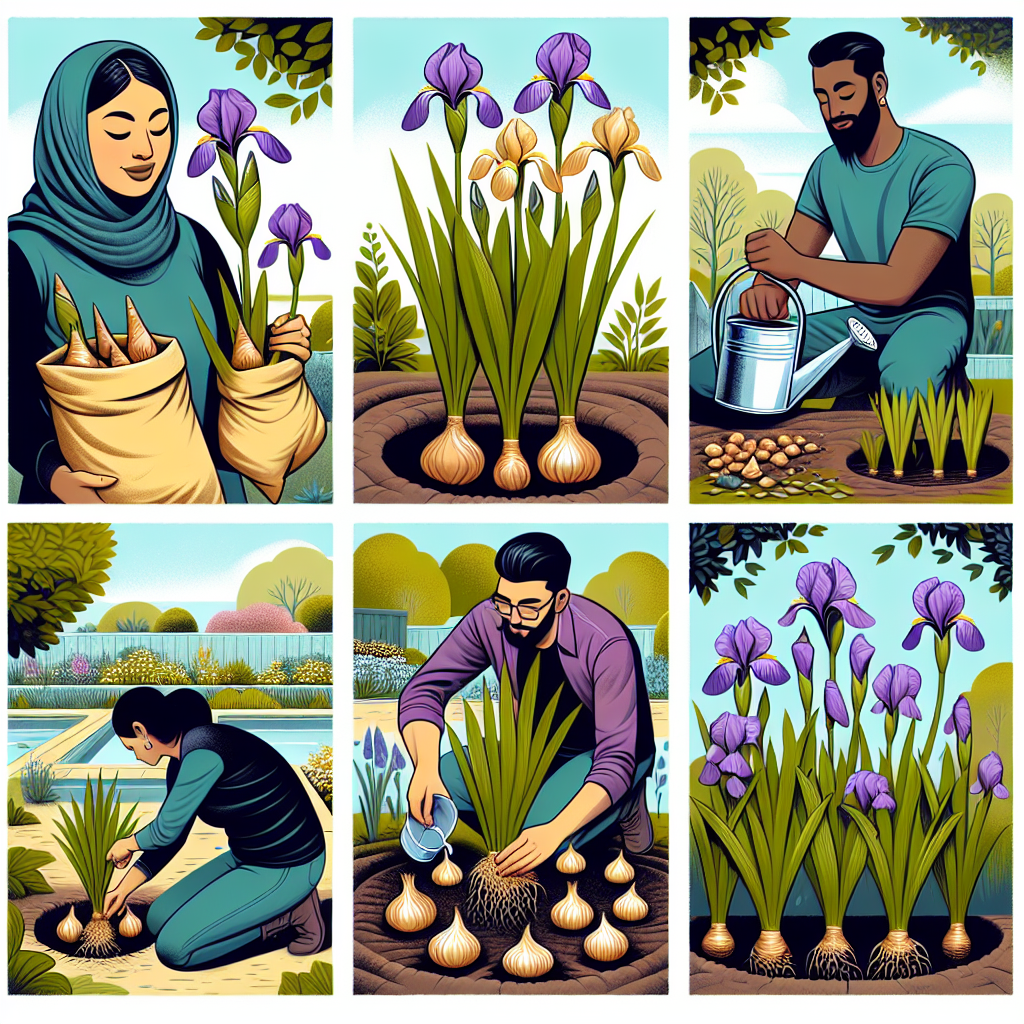
How to plant bearded iris
How to Successfully Plant Bearded Iris
Bearded irises, with their breathtaking blooms and lush greenery, are a favorite among gardeners. These perennials are known for their stunning variety of colors and unique flower shapes. If you're looking to enhance your garden with these beautiful flowers, understanding the proper methods of planting and care is crucial. This guide will cover everything you need to know about planting bearded irises, ensuring you achieve optimal growth and beautiful blooms.
Choosing the Right Location
The first step in planting bearded irises is selecting the right location. These hardy plants thrive in full sun, so aim for a spot in your garden that receives at least six hours of direct sunlight daily. Here are some important considerations when choosing a location:
- Soil drainage: Bearded irises do not like wet feet. Ensure the soil drains well to prevent rotting.
- Air circulation: Good air flow around the plants helps prevent diseases.
- Protection from strong winds: While they enjoy sun, too much wind can damage the delicate flowers.
Soil Preparation
Before planting your bearded irises, prepare the soil to create a thriving environment. Follow these tips for optimal soil preparation:
- Test the pH: Bearded irises prefer slightly acidic to neutral soil (pH 6.0 to 7.0). You can purchase a soil test kit to check your garden's pH.
- Add organic matter: Incorporating compost or well-rotted manure into the soil can improve its texture and nutrient content.
- Till the soil: Work the soil to a depth of at least 12 inches. This promotes healthy root development.
- Level the area: Rake the soil to ensure an even surface for planting.
Choosing Your Bearded Iris
When selecting bearded iris plants, there are numerous varieties to choose from. Here are a few popular types that can add beauty to your garden:
- Standard Dwarf Bearded Iris: Grows about 8-15 inches tall.
- Intermediate Bearded Iris: Typically ranges from 16-27 inches tall.
- Tall Bearded Iris: Can grow up to 36 inches tall and produces large, stunning flowers.
- Reblooming Bearded Iris: These varieties may bloom multiple times throughout the growing season.
When to Plant Bearded Iris
The ideal time to plant bearded irises is in late summer to early fall. This timing allows the plants to establish their roots before winter, fostering healthy growth in the spring. Here are some signs to look for:
- Soil temperatures should be consistently above 60°F.
- Avoid planting before the last frost in your area.
- Be mindful of the local weather patterns; aim for a period when dry conditions are expected.
How to Plant Bearded Iris
Once you've prepared your soil and chosen your irises, it's time to plant them. Follow these simple steps for a successful planting:
- Dig a hole: Create a hole that is wide and deep enough to accommodate the rhizome (usually about 12 inches apart from others). The hole should be around 6-8 inches deep.
- Position the rhizome: Place the rhizome in the hole horizontally with the “eyes” or growth points facing upwards. Ensure the crown is at or slightly above the soil surface.
- Backfill with soil: Carefully backfill the hole, avoiding excessive pressure on the rhizome. Leave the upper part exposed for optimal sunlight exposure.
- Water gently: After planting, water the area lightly to settle the soil around the rhizome.
Caring for Your Bearded Iris
Once your bearded irises are planted, proper care will encourage vibrant blooms and healthy foliage. Here are some essential care tips:
- Watering: Water the plants during dry spells but allow the top inch of soil to dry out between watering.
- Fertilizing: Use a balanced fertilizer in the spring. Avoid over-fertilizing, as this can promote foliage at the expense of blooms.
- Mulching: Apply a thin layer of mulch to help retain moisture and control weeds, but keep it away from the rhizomes.
- Deadheading: Remove spent blooms to encourage new growth and prevent seed formation, which can sap energy from the plant.
Pest and Disease Management
Bearded irises are relatively low-maintenance but can be susceptible to certain pests and diseases. Keep an eye out for the following:
- Iris borer: This pest can cause significant damage. To manage it, cut back foliage in the fall and remove any affected plants.
- Root rot: Overwatering can lead to root rot. Ensure proper soil drainage to prevent this issue.
- Botrytis blight: This fungal disease can affect the flowers. Remove any affected leaves and avoid overhead watering.
Dividing Bearded Iris
Over time, bearded irises can become overcrowded, leading to fewer blooms. Dividing the plants every 3-4 years helps maintain their vigor. Follow these steps for effective division:
- Timing: The best time to divide bearded irises is in late summer after blooming has finished.
- Digging up: Carefully dig up the clump of rhizomes with a garden fork or spade.
- Separating: Use a knife to separate the rhizomes, ensuring each piece has a fan of leaves and a healthy section of root attached.
- Replanting: Replant the divisions in well-prepared soil, following the same planting instructions previously outlined.
Enhancing Your Garden’s Aesthetic
Bearded irises are not only stunning on their own but can also complement a wide range of other plants. Consider planting them alongside:
- Daylilies - Their overlapping blooming times create a beautiful landscape.
- Lavender - The combination of colors and scents is delightful.
- Hostas - Their foliage contrasts beautifully with the upright growth habit of bearded irises.
In Conclusion
Now that you know how to plant bearded iris and care for them, you can confidently create a vibrant garden that blooms beautifully year after year. By selecting the right location, preparing your soil, and following proper planting and care practices, these stunning flowers will add a touch of elegance to your outdoor space. Happy gardening!
By Guest, Published on October 14th, 2024